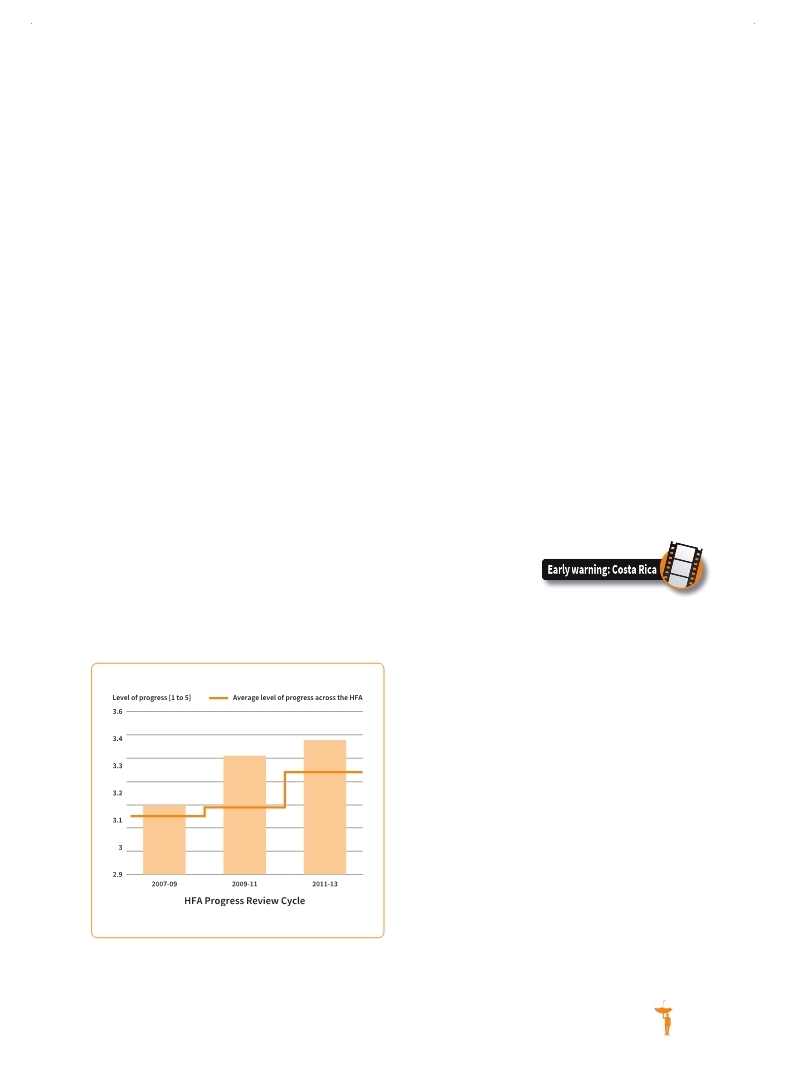 |
Global Assessment Report on Disaster Risk Reduction 2015
Making development sustainable: The future of disaster risk management |
 |
Global Assessment Report on Disaster Risk Reduction 2015
Making development sustainable: The future of disaster risk management |
|
|

155
By the time of the Second International Conference on Early Warning, which was held in Germany in 2003, this systems approach to early warning had become orthodox and influenced national legislation such as the National Integrated Drought Information System (NIDIS) Act of 2006 (Public Law 109-430) in the United States of America.1
Further momentum for the development of early warning systems was generated by the Indian Ocean tsunamis in 2004, which highlighted how many lives could have been saved if a regional tsunami early warning system had existed. As a consequence, early warning featured heavily on the agenda of the Second World Conference on Disaster Reduction in 2005 and was given heavy emphasis in the HFA, which reprises the emerging early warning systems concept in key activities within Priority for Action 2 (Box 8.1).
Government self-assessment reports prepared using the HFA Monitor show significant progress against the third core indicator under Priority for Action 2: Early warning systems are in place for all major hazards, with outreach to communities
(Figure 8.1). Each biennial reporting period since 2007 has shown growing achievement, although the indicator is too generic to capture how much progress has actually been made against each of the key activities listed above.
The development and implementation of early warning systems has been repeatedly cited as one of the areas where the most progress has been made within the HFA (WMO, 2011
WMO (World Meteorological Organization). 2011,Institutional Partnerships in Multi-Hazard Early Warning Systems, A Compilation of Seven National Good Practices and Guiding Principles. Golnaraghi, Maryam, ed. Springer.. . UNISDR. 2013b,Implementation of the Hyogo Framework for Action, Summary of Reports 2007-2013. Geneva, Switzerland: UNISDR.. . UNISDR (United Nations Office for Disaster Risk Reduction) and Government of Germany. 2006,Developing Early Warning Systems: A Checklist, EWC III: Third International Conference on Early Warning. From concept to action. 27-29 March 2006, Bonn.. . In particular, HFA progress reports highlight success in developing early warning systems that correspond more closely to local needs. For example, Australia reports that every state and territory now has the ability to tailor core messages to fit local conditions and evacuation plans. In Sri Lanka, a people-centred early warning system was established that includes teams of volunteers using local communication methods. In Thailand, volunteers have been trained at the village level to monitor hazards and transmit early warnings in a timely manner.
Technical, institutional and social challenges in developing and maintaining these systems are often reported in conjunction with the remoteness of villages and difficulties of terrain, making outreach to the last mile difficult. Many countries also note financial constraints and limited
HFA Core Indicator 2.3: Multi-hazard early warning system with community outreach.
(Source: UNISDR with data from the HFA Monitor.2)
Figure 8.1 Progress in early warning
|
 
Page 1Page 10Page 20Page 30Page 40Page 50Page 60Page 70Page 80Page 90Page 100Page 110Page 120Page 130Page 140Page 145Page 146Page 147Page 148Page 149Page 150Page 151Page 152Page 153Page 154Page 155Page 156->Page 157Page 158Page 159Page 160Page 161Page 162Page 163Page 164Page 165Page 166Page 167Page 168Page 169Page 170Page 180Page 190Page 200Page 210Page 220Page 230Page 240Page 250Page 260Page 270Page 280Page 290Page 300Page 310
|
|
 
|
 
|
